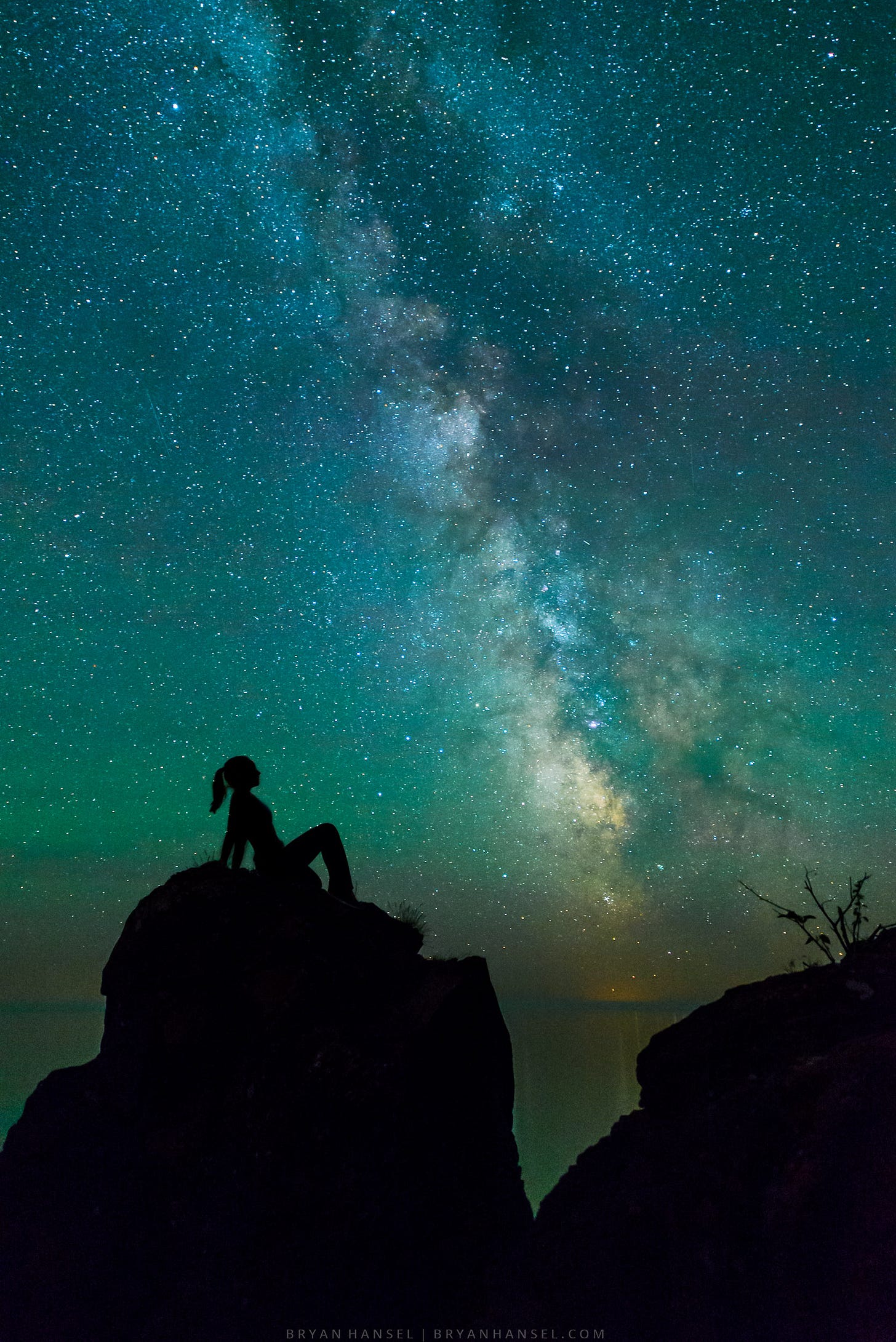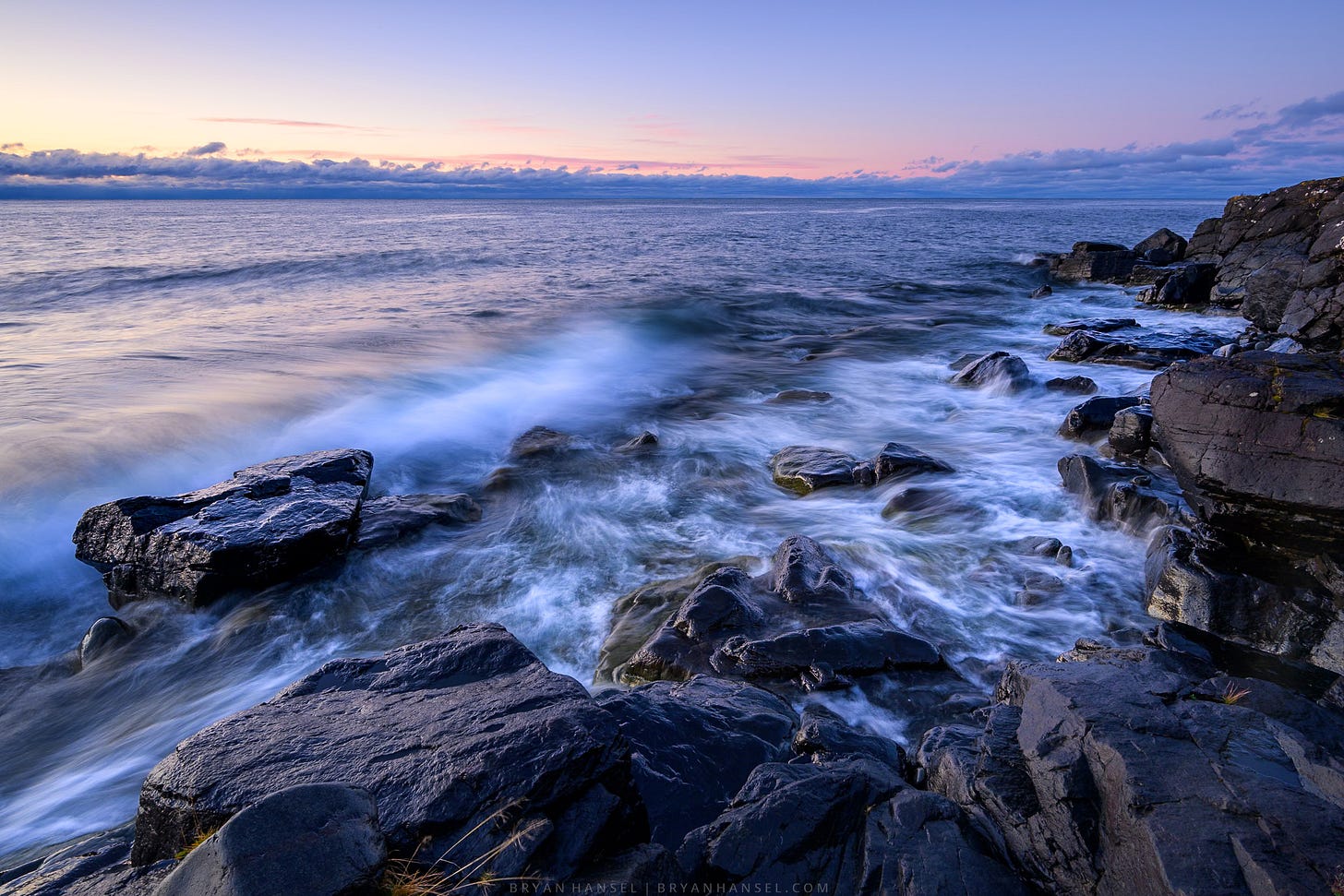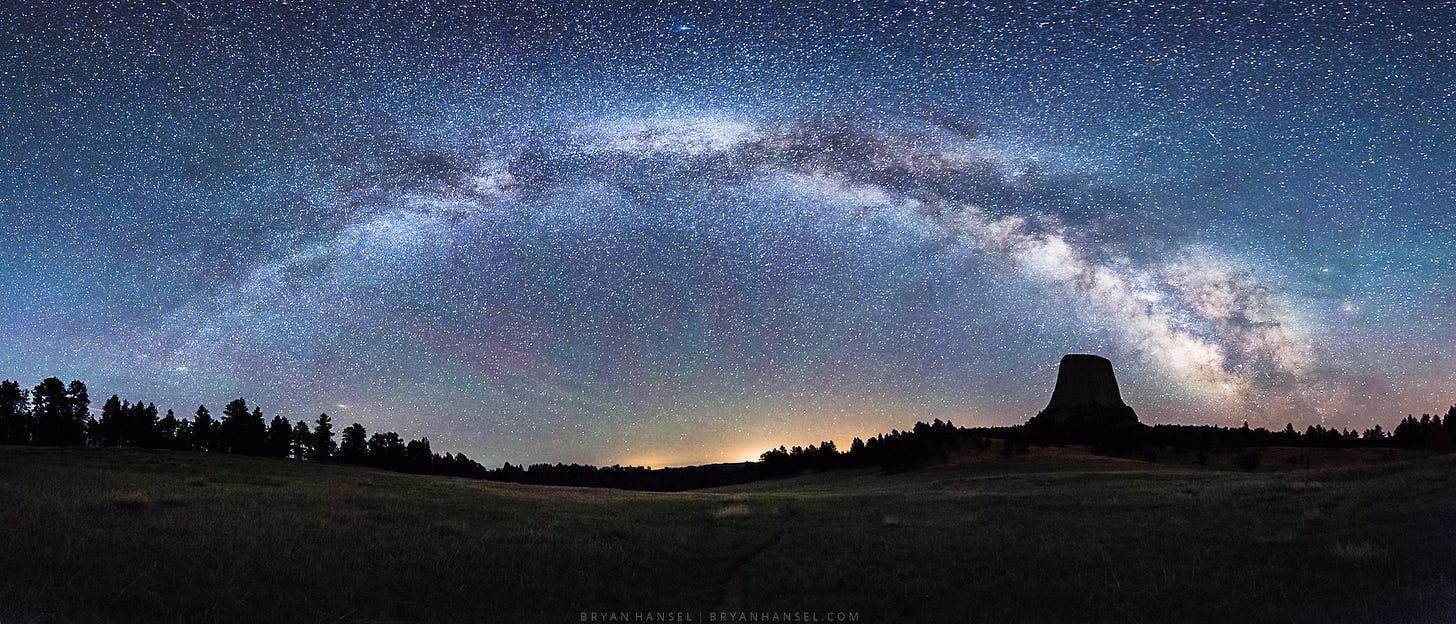Years ago, I posted a photo of the Milky Way on the internet, and someone replied to my post, “It’s not possible to take a picture of the Milky Way… You can’t take a photo of the entire galaxy, [because to do so] it would have to be done from all parts of the planet.”
I replied, “Let's apply that logic and argument to another subject. Let's take Lake Superior as an example. By your logic, if someone goes down to Artist's Point to take a picture of Lake Superior… they aren't actually taking a picture of Lake Superior.”
I went on to explore the idea even if someone could instantaneously take a photo from every point on the planet to try and capture the entire Milky Way, they wouldn’t be doing so. The reason is that most cameras can’t capture infrared, ultraviolet, and entire spectrum. They also can’t photograph dark matter, movement, time, or any other phenomenon that isn’t within the limited ability of the sensor’s capability. A camera is so limited that it can’t even capture the limited amount of the spectrum that human eyes can see.
There’s a lot of silliness in this argument, because when I step out on my porch and look up into the night sky and see the Milky Way, I’ve seen the Milky Way. It’s not like I would say to you, “I have seen a limited portion of the Milky Way.” I’d say, “There’s the Milky Way.” Everyone knows this, and it’s just pedantic to suggest otherwise. Language isn’t that strict and photography doesn’t work that way either.
That said, a camera can take a photo of the Milky Way. Although maybe not in the way that you think. It has to do with truth. Truth can be slippery. A rabbi teacher of mine once said that they thought the most important line in the Christian bible was when Pontius Pilate asks, “What is truth?” He then went into an explanation of why he thought that, and it was nothing like how Christian theologists explain the Pilate scene.
One way to think about truth in photography is: Photography seldom tells the literal truth; it lives in the realm of metaphorical truth.
As an example, when someone says that they took a photo of the Milky Way they aren’t literally saying that they captured the enormity and entirety of the Milky Way, but instead they are saying the photo is a metaphor for the entirety of the Milky Way by evoking a sense of grandeur in the viewer. This is especially true if the photo somehow communicates the enormity of the Milky Way and the smallness of the human condition in comparison.
Another example taken from the current season of fall is that if I go out and take a nice fall color photo of a road surrounded by birch and aspens and call it “Fall in the Northwoods,” I’m not literally saying as literalists would that I have captured every literal thing about fall in the photo. That would be impossible. Instead the photo acts as a metaphor for how we experience the fall.
The entire discussion that I had back then reminded me of something that Galen Rowell said. Rowell was a pioneer of participatory photography in the outdoors and he was writer for Outdoor Photographer Magazine. He often tried to communicate that a photo is something different than what we see with our eyes. I interpreted what he said as there’s no way that a camera can take a literal picture of the world. But instead it’s a tool to create something better than what we see in the world. In other words, a photo becomes a metaphor.
Here’s the quote.
One of the biggest mistakes a photographer can make is to look at the real world and cling to the vain hope that next time his film will somehow bear a closer resemblance to it...If we limit our vision to the real world, we will forever be fighting on the minus side of things, working only too make our photographs equal to what we see out there, but no better.
Galen Rowell
Ultimately, I believe we aren't capturing images in a literal sense. There is no way to do that with a camera considering how limited they are. We are creating illusions that have the universe as inspiration, but it isn't reality. And in the end we haven't captured anything, but we have created metaphors for reality that fool people into believing they are looking at the entirety of something. When in reality, they are simply looking at pixels on a screen or ink on paper.
Until next time
Before I wrap up, I want to mention that all my registration for photo workshops has been moved to Ticket Tailor. If you run events, you should check them out. I’m still list all my photo workshops on my website here, but if you want to see what it looks like on Ticket Tailor, you can see it at this link. I can’t believe how much it has simplified things for me. I wish I would have done this years ago.
I should have my calendar done and ready for order by the next newsletter. I’ll cover it then. Hopefully, my eBook called my Favorite Photos of 2023 will be finished by then, too.
I’ll see you again in two weeks.







Great discussion. I have been teaching new photographers for years that the image you get from the camera is not real. Our magnificent camera has many deficiencies, more even than the naked eye. What we take away from a shot in our brain is equally as important as what the camera captures. Were we hot or cold, why did we take the shot, what really moved us. Reality belongs to each individual in their head. I ask them to try and duplicate that when they sit down at the computer.
Photography is by definition editorial. You are limited by the camera frame and the technical limitations of the device.
The history of the Milky Way as a concept means you definitely can photograph it. It was named that by ancient peoples observing the night sky. It wasn’t till Galileo made his telescope in 1610 that we knew it was made of individual stars, and even later that the concept of a galaxy came about.
So inasmuch that you can photograph the phenomenon that ancient peoples named the Milky Way, you can definitely photograph it. Everything else you said is true too of course.